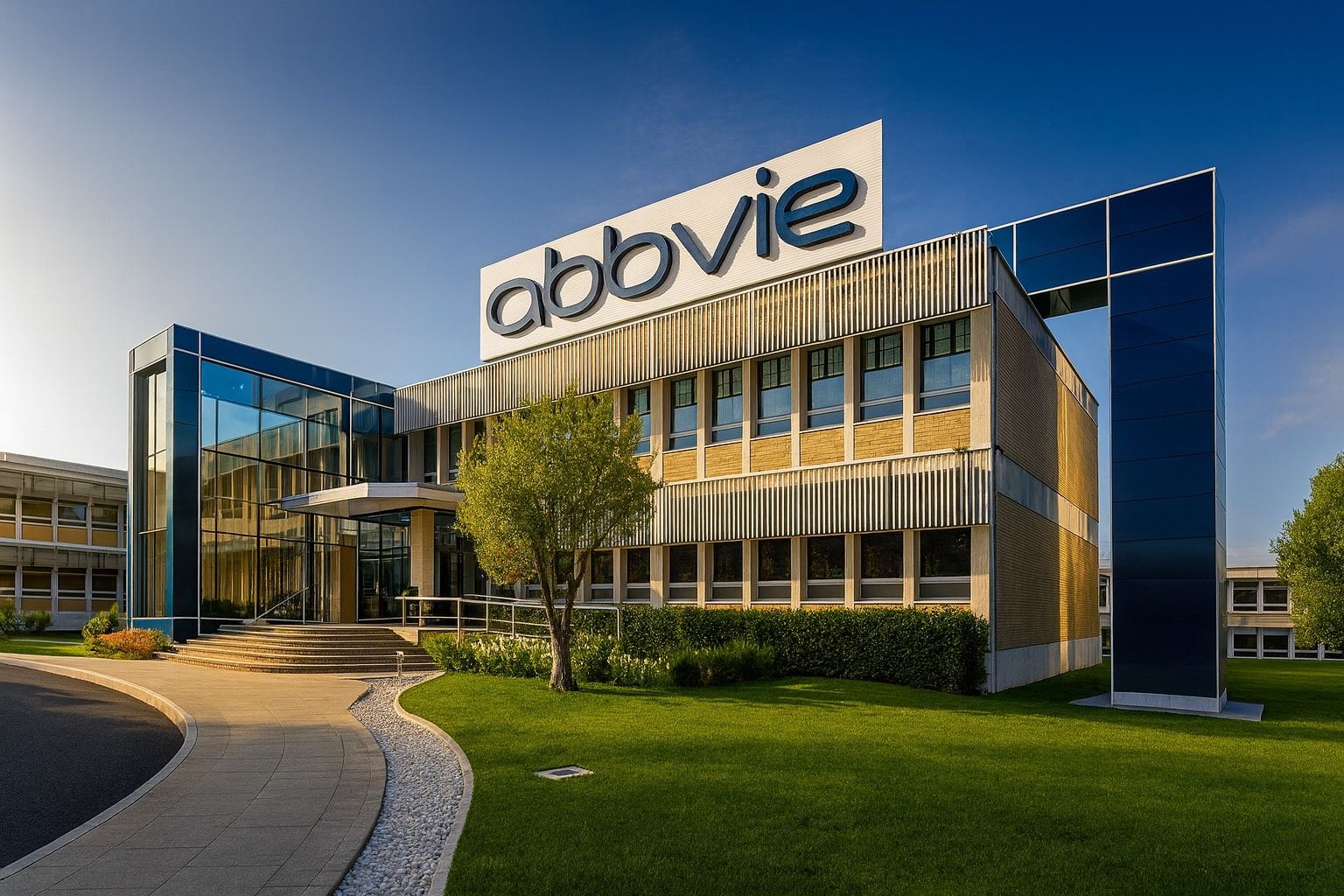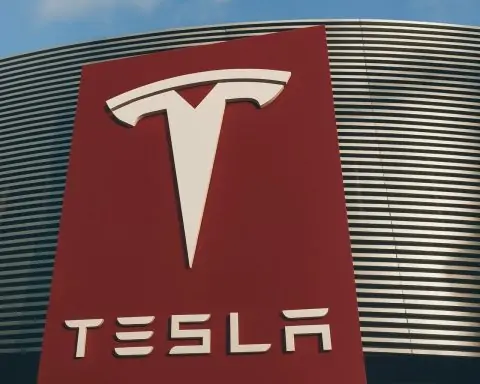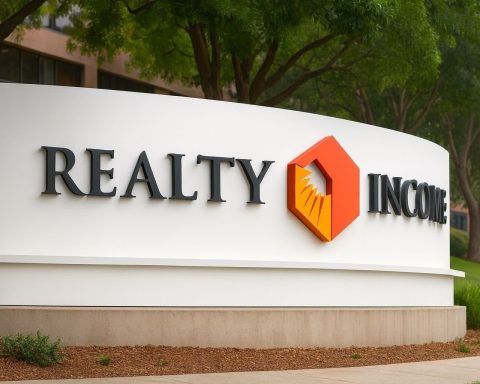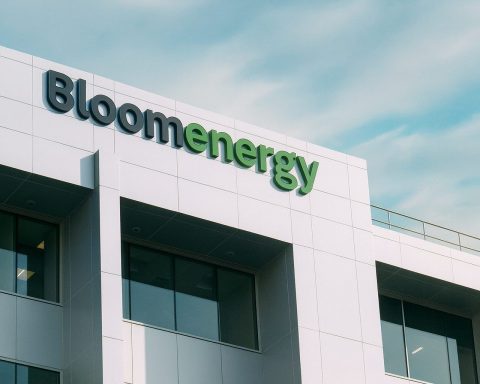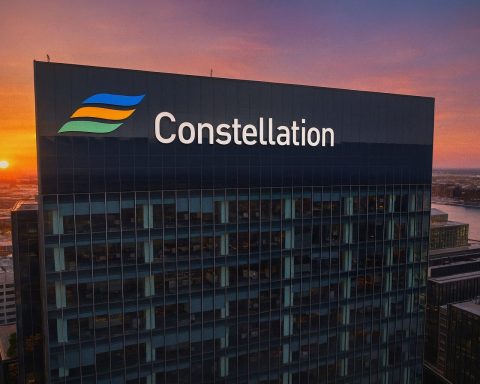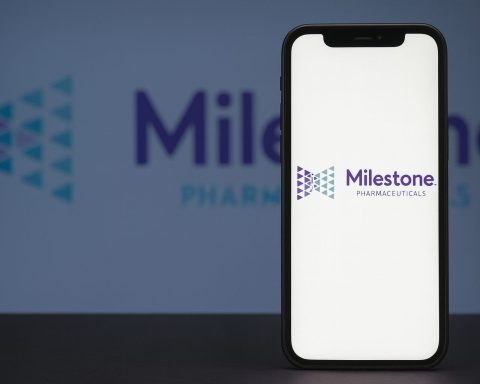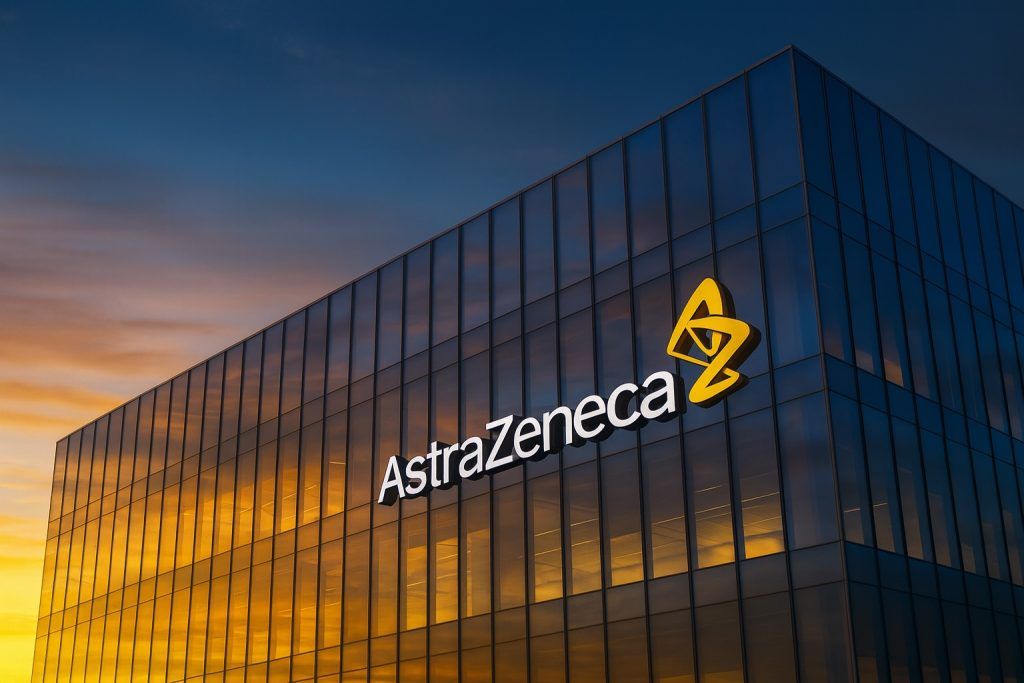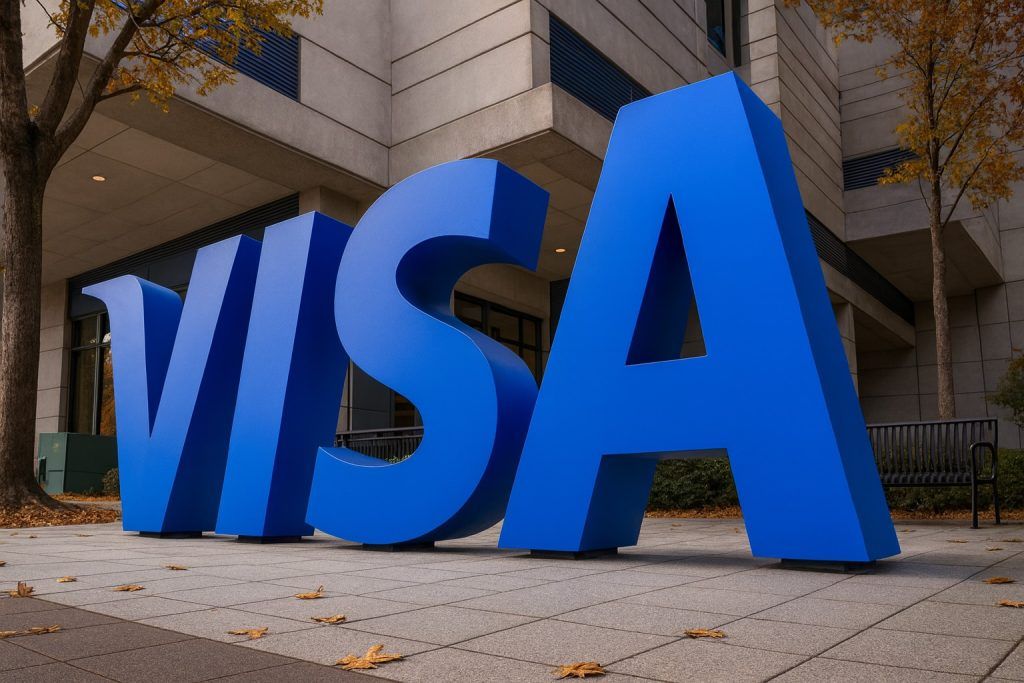- Current Price: ~$231 (closing Oct 10, 2025) [1]. AbbVie’s stock has recently fluctuated between roughly $230 and $234 over the past week [2]. It hit a 52-week high around $244.8 on Oct. 1, 2025, and stands well above its 52-week low of $163.81 [3] [4].
- Market Cap & Valuation: About $408–413 billion [5] [6]. AbbVie’s trailing P/E is unusually high (~110×) [7], reflecting weak current earnings (Humira decline) but strong future expectations. The stock’s dividend is $1.64 per quarter ($6.56 annual, yield ~2.8%) [8], with an ex-dividend date of Oct. 15 and next payment Nov. 14 [9] [10]. Notably, AbbVie’s payout ratio (~312%) is very high [11], indicating dividends are largely funded by cash flow rather than earnings (a risk factor).
- Recent Momentum: The stock jumped ~3% intraday on Sept. 30, 2025, after AbbVie filed FDA applications for two new drugs (Pivekimab for rare blood cancer and Tavapadon for Parkinson’s) and announced a new manufacturing facility [12]. A broader pharma rally (e.g. Pfizer’s drug-pricing deal) lifted AbbVie ~6% over early October [13] [14]. Over the past year, ABBV is up ~28%, outperforming the S&P 500’s healthcare index, but lags fast-growing peers like Eli Lilly.
- Pipeline Highlights: AbbVie is pushing multiple new treatments. In late Sept/early Oct it submitted a Biologics License Application for Pivekimab (PVEK), its first blood-cancer ADC [15] [16], and an NDA for Tavapadon (Parkinson’s). On Oct. 6, AbbVie reported positive Phase 2 ELATE results: Botox (onabotulinumtoxinA) significantly eased upper-limb tremor symptoms [17] [18]. It also filed for Rinvoq label expansions (e.g. alopecia). These advances — plus expected approvals in immunology and oncology — suggest revenue growth beyond core Humira/Skyrizi.
- M&A and Deals: In mid-2025 AbbVie bought Capstan Therapeutics (in vivo CAR-T technology) and Gilgamesh Pharmaceuticals’ bretisilocin (a next-gen psychedelic for depression) [19] [20]. These acquisitions (totaling over $10B) reflect AbbVie’s effort to bolster its neuroscience and immunology pipelines. Leadership has emphasized this strategy: CEO Robert Michael recently noted the company will exceed its prior revenue peak only in AbbVie’s second year after Humira’s U.S. patent loss [21] [22].
- Financials (Recent Quarter): In Q2 FY2025 (ended June 30), AbbVie beat revenue ($15.42B vs. $14.93B est.) but missed EPS ($2.97 vs. $3.24 est.) [23]. Net margin was ~6.45% [24]. Year-over-year, revenue grew 6.6% (driven by newer drugs), though Humira sales continued to plunge. Management reiterated full-year EPS guidance (~$12.20) and noted strong growth from Skyrizi and Rinvoq [25] [26]. The company raised its FY2025 adjusted EPS forecast to $12.12–$12.32 [27] and said newer drugs would generate over $31 billion by 2027 [28]. On Oct. 1, AbbVie also announced a $0.409 per-share quarterly dividend (annualized 2.8% yield) [29] [30].
Stock Performance & Recent Trends
AbbVie’s stock closed at $230.88 on Oct. 10, 2025 [31]. Over the prior five trading days it moved modestly: Oct. 7: $232.83; Oct. 8: $231.24; Oct. 9: $230.69; Oct. 10: $230.50 [32]. Notably, on Sept. 30 ABBV hit a 52-week high around $244.8, buoyed by regulatory filings and a sector-wide rally. From that late-September peak it has pulled back into the low-$230s as investors digest upcoming FDA news. On Oct. 1 the entire pharma sector rallied (+5% in Europe) after Pfizer announced a U.S. drug-pricing deal [33]; AbbVie’s shares jumped ~6–8% that day as well. Technicals (50-day MA ≈ $214; 200-day MA ≈ $197) remain bullish, and the stock trades above both [34], though momentum indicators (RSI ~36) suggest it could be oversold.
Recent News & Developments
- Regulatory Filings: At the end of Sept. 2025 AbbVie filed a BLA for pivekimab sunirine (PVEK) to treat BPDCN, a rare blood cancer [35]. R&D chief Roopal Thakkar hailed this as AbbVie’s “latest ADC, our first ADC in blood cancer” and a step toward new therapies [36]. The company also filed an NDA for tavapadon (Parkinson’s) in late Sept (announced Sept. 26). In early Oct, AbbVie reported positive Phase 2 data for Botox in treating essential tremor [37] [38], which is notable because no new drugs have been approved for tremor in 30+ years (per AbbVie’s Daniel Mikol: “These results represent a significant advance…for a challenging condition.” [39]). These R&D wins suggest AbbVie is diversifying beyond immunology into neuroscience and oncology.
- Acquisitions & Collaborations: AbbVie has been active in buying promising biotech. In August 2025 it agreed to acquire Gilgamesh Pharmaceuticals’ bretisilocin program (a next-generation psychedelic for MDD) for up to $1.2 billion [40]. In July it completed the acquisition of Capstan Therapeutics, adding an in vivo CAR‑T candidate for autoimmune disease [41]. Earlier in 2024 it paid $8.7 billion for Cerevel Therapeutics (schizophrenia treatments). Management says these deals (and a generally deep R&D pipeline of ~35+ programs) will fuel long-term growth.
- Leadership: On Feb 14, 2025, AbbVie announced CEO Robert A. Michael would also become Chairman of the Board effective July 1, 2025, succeeding long-time AbbVie founder CEO Richard Gonzalez [42]. This indicates continuity at the top. Lead Independent Director Roxanne Austin praised Michael as “a visionary leader… the right leader to guide this company into its next phase of growth” [43]. Michael himself said he was “honored to take on the role” and looks forward to advancing AbbVie’s pipeline [44].
- Other News: AbbVie has quietly expanded manufacturing (groundbreaking ~$70M biologics plant in North Chicago in Sep. 2025) and optimized pricing (e.g., negotiating higher U.S. prices for its ovarian cancer drug ELAHERE in Europe). The firm has also faced industry-wide issues: the FDA announced in early Oct. 2025 it would pause accepting new applications due to a government shutdown [45], potentially delaying AbbVie’s pending filings. On a policy front, Trump’s administration is pushing down U.S. drug prices (recent Pfizer deal) [46]; AbbVie is working with officials but has defended its pricing.
Financials, Earnings & Dividends
AbbVie’s revenue and profits have held up despite Humira’s decline. In Q2 2025 (ended June) AbbVie reported $15.42 billion in revenue, 6.6% higher than a year ago [47], as newer drugs (Skyrizi, Rinvoq, Botox, etc.) offset Humira’s fall. GAAP EPS was $2.97, missing the $3.24 consensus by $0.27 [48]. Net margin was just 6.45% [49] (down from ~40% in better times). Analysts expect full-year 2025 EPS around $12.20 [50]. Management reiterated guidance of $12.12–$12.32 (vs. $12.18 est.) [51], and CEO Michael noted AbbVie “expect[s] net revenues to exceed [its] previous peak” by 2025 [52] thanks to Skyrizi/Rinvoq growth. Notably, Q4 2024 saw Humira sales plunge ~49% year-over-year [53], emphasizing the need for new-drug growth (AbbVie now projects Skyrizi+Rinvoq >$31 billion by 2027 [54]).
AbbVie pays a regular dividend. In Oct. 2025 the board declared $1.64 per share (to be paid Nov. 14) [55] [56]. This annualizes to $6.56 and yields ~2.8%. (For comparison, Pfizer yields ~6.9%, Merck ~3.6%, BMS ~5% [57] [58].) The dividend is fully covered by free cash flow (payout ratio ~300% on earnings due to buybacks) [59] [60]. AbbVie has increased its payout for 50 consecutive years, but the extraordinarily high payout ratio is a risk if cash flow falters.
Analyst Forecasts & Expert Views
Wall Street’s consensus on ABBV is moderately bullish. 28 analysts rate AbbVie a “Moderate Buy” on average [61]. The average 12-month price target is about $231.90 (implying roughly 0% upside from current levels) [62]. Targets range from ~$194 to $284, reflecting some disagreement. For example, JPMorgan recently raised its ABBV target to $235 (rating: Overweight) [63], and Piper Sandler lifted its to $284 (Overweight) [64]. Berenberg upgraded AbbVie to Buy (target $270) in Sept. 2025, while HSBC cut its rating from Strong-Buy to Hold on Oct. 1. MarketBeat notes 19 Buys, 9 Holds, 0 Sells [65].
Industry analysts highlight AbbVie’s strong pipeline and cash flows. As one research note put it: “AbbVie is navigating a $413 billion market cap with a robust pipeline,” citing its blockbuster drugs and high R&D spend [66] [67]. CEO Robert Michael has also been optimistic: “We are entering 2025 with significant momentum,” he told investors, expecting revenue above the prior peak by next year [68]. By contrast, some analysts caution the stock is fairly valued after its recent run, unless growth surprises continue. On the retail side, specialty outlets note that aggressive options positioning (e.g. high open interest in ABBV calls) suggests some traders are betting on further upside in the short term [69] [70].
AbbVie vs. Peers
Compared to peers, AbbVie trades at a premium P/E due to its long patent cliffs but also boasts stronger growth in immunology:
- AbbVie (ABBV): MC ~$408–413B [71] [72], P/E ~110 (Oct. 2025) [73], dividend ~2.8% [74], 52-week range $163.8–$244.8 [75] [76]. Key products: Humira (declining), Skyrizi, Rinvoq, Botox, Orilissa, Venclexta, etc. Pipeline: oncology ADCs (PVEK), neuroscience (schizophrenia, depression).
- Pfizer (PFE): MC ~$141B [77], P/E ~14, dividend ~6.9% [78] (very high yield), 52-week low ~$34 (pre-COVID) to now ~$24. Major drugs: Prevnar, Paxlovid, vaccines; currently facing generic Suboxone, Ibrance. Recently struck a U.S. price-cut deal under Trump.
- Merck (MRK): MC ~$225B [79], P/E ~13.8, dividend ~3.6%, 52-week range ~$86–$116. Flagship Keytruda (PD-1 cancer), plus Gardasil, Januvia, Steglatro. Keytruda patents extended into 2028. Results-driven growth (~5–7% revenue CAGR).
- Bristol Myers Squibb (BMY): MC ~$94B (Fortune 500 rank), P/E ~18, dividend ~5–6%, 52-week range ~$56–$81. Major drugs: Eliquis, Opdivo/Yervoy, Revlimid (post-Celgene acquisition). Lost Revlimid exclusivity (2022) but building pipeline with Abraxane, Reblozyl, Piqray; focus now on cell therapy (bluebird’s CAR-T Zolgensma deal in biotech).
AbbVie’s valuation looks high relative to these peers, but many analysts argue it’s justified by its robust growth profile (Skyrizi/Rinvoq growing mid-teens) and large R&D pipeline. By contrast, Pfizer and Merck have slower growth but higher dividends; BMS trades at a discount but with more uncertainty post-Revlimid.
Risks & Opportunities
Risks: The biggest near-term risk is the ongoing loss of Humira exclusivity. Humira’s sales fell ~49% in Q4 2024 [80]; biosimilar competition will continue to drag revenues. AbbVie’s success now hinges on new drugs delivering. Failures or delays (e.g. in the psychiatric or gene-therapy pipelines) could hurt the stock. Indeed, AbbVie recently scaled back investment in one schizophrenia program after mid-stage trial failures [81]. Pricing pressure is another concern: the U.S. government is actively pushing drugmakers to cut prices, which could squeeze margins (though AbbVie has negotiated tariffs/price deals like its peers [82]). The very high payout ratio means any earnings shortfall could endanger the dividend or buybacks. Macro headwinds (recession fears, rising rates) and sector rotation may also damp performance short-term.
Opportunities: On the positive side, AbbVie is navigating these risks by aggressive portfolio renewal. It has one of pharma’s deepest late-stage pipelines. Upcoming catalysts include the FDA decisions on pivekimab and tavapadon, Phase 3 readouts (e.g. Rinvoq in new indications, ABBV‑154 migraine antibody), and multiple Phase 2 trials (e.g. Rinvoq in ulcerative colitis, Skyrizi in Crohn’s/AD, ADCs in AML/solid tumors). The Botox tremor data could lead to label expansion. AbbVie’s immunology business is thriving: Skyrizi (for psoriasis) and Rinvoq (JAK-inhibitor) are growing ~20–30% and have multi-$10B potential [83]. Management’s bullish guidance (revenues back to all-time highs by 2025 [84]) is an explicit signal of confidence. Moreover, AbbVie is expanding manufacturing and R&D globally, and its strong balance sheet (net debt ~$20B) allows for opportunistic M&A – Wall Street still speculates about what big deal might come next. On valuations, some analysts (and models like Simply Wall St.) consider ABBV undervalued: one DCF analysis suggested ~47% upside at mid-2025 prices if growth meets forecasts. For long-term investors, the combination of a well-covered dividend and high-growth pipeline may outweigh the short-term headwinds.
Bottom Line: AbbVie is a mature pharma giant facing a pivotal transformation. Its stock reflects a tug-of-war between the hit from Humira biosimilars and the promise of new therapies. Recent FDA filings, trial successes, and acquisitions have the potential to reignite growth. The “buzz” around AbbVie’s October 2025 developments – positive trial data, strategic partnerships, and bullish analyst revisions – might push the stock higher, especially if industry-wide tailwinds (like lower tariffs or negotiated drug price reforms) materialize. As one industry pundit put it, AbbVie is “navigating a $413 billion giant with a robust pipeline” [85] [86]. Investors should watch the earnings report (expected late Oct.), FDA news flow, and pharma policy changes closely; these will help determine if ABBV is on the cusp of a sustained rally or due for a pullback.
Sources: AbbVie press releases and SEC filings [87] [88] [89]; Reuters, MarketBeat, directorstalkinterviews, and industry news [90] [91] [92]. All data as of Oct. 11, 2025.
References
1. www.marketbeat.com, 2. www.investing.com, 3. www.marketbeat.com, 4. www.investing.com, 5. www.marketbeat.com, 6. www.directorstalkinterviews.com, 7. www.marketbeat.com, 8. www.marketbeat.com, 9. www.marketbeat.com, 10. www.marketbeat.com, 11. www.marketbeat.com, 12. www.ainvest.com, 13. www.reuters.com, 14. www.ainvest.com, 15. news.abbvie.com, 16. news.abbvie.com, 17. news.abbvie.com, 18. news.abbvie.com, 19. news.abbvie.com, 20. news.abbvie.com, 21. www.reuters.com, 22. www.reuters.com, 23. www.marketbeat.com, 24. www.marketbeat.com, 25. www.reuters.com, 26. www.reuters.com, 27. www.reuters.com, 28. www.reuters.com, 29. www.marketbeat.com, 30. www.marketbeat.com, 31. www.marketbeat.com, 32. www.investing.com, 33. www.reuters.com, 34. www.marketbeat.com, 35. news.abbvie.com, 36. news.abbvie.com, 37. news.abbvie.com, 38. news.abbvie.com, 39. news.abbvie.com, 40. news.abbvie.com, 41. news.abbvie.com, 42. news.abbvie.com, 43. news.abbvie.com, 44. news.abbvie.com, 45. www.oncologypipeline.com, 46. www.reuters.com, 47. www.marketbeat.com, 48. www.marketbeat.com, 49. www.marketbeat.com, 50. www.reuters.com, 51. www.reuters.com, 52. www.reuters.com, 53. www.reuters.com, 54. www.reuters.com, 55. www.marketbeat.com, 56. www.marketbeat.com, 57. companiesmarketcap.com, 58. macrotrends.net, 59. www.marketbeat.com, 60. www.directorstalkinterviews.com, 61. www.marketbeat.com, 62. www.marketbeat.com, 63. www.marketbeat.com, 64. www.marketbeat.com, 65. www.marketbeat.com, 66. www.directorstalkinterviews.com, 67. www.directorstalkinterviews.com, 68. www.reuters.com, 69. www.ainvest.com, 70. www.ainvest.com, 71. www.marketbeat.com, 72. www.directorstalkinterviews.com, 73. www.marketbeat.com, 74. www.marketbeat.com, 75. www.marketbeat.com, 76. www.investing.com, 77. companiesmarketcap.com, 78. companiesmarketcap.com, 79. macrotrends.net, 80. www.reuters.com, 81. www.reuters.com, 82. www.reuters.com, 83. www.reuters.com, 84. www.reuters.com, 85. www.directorstalkinterviews.com, 86. www.reuters.com, 87. www.marketbeat.com, 88. news.abbvie.com, 89. news.abbvie.com, 90. www.reuters.com, 91. www.reuters.com, 92. www.marketbeat.com
